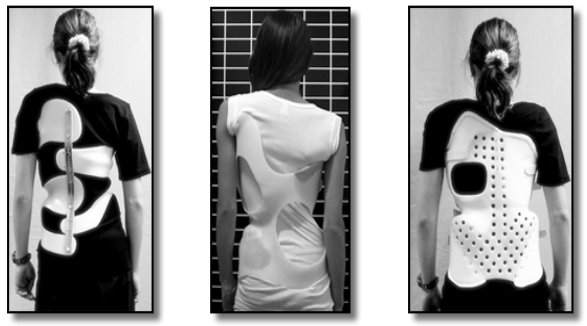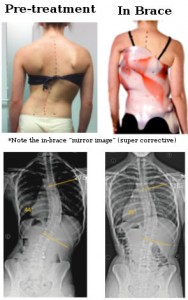A scoliosis brace is a type of spinal support or “orthosis” This is a device used on the outside of the body to support, align, correct or prevent abnormal spinal curvature. Your scoliosis specialist will prescribe, manufacture and/or manage the use of these scoliosis treatment devices.
The Scoliosis Brace: A Brief History
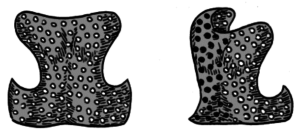
Bracing is currently the standard treatment for Adolescent Idiopathic Scoliosis (AIS) in curves that are considered to be moderate in their severity and are likely to progress. Before we look at modern bracing approaches, let’s look back in time to see how this concept of bracing has evolved.
Milwaukee Brace
Boston Brace
Chêneau Brace
Rigo Chêneau Brace
Charleston and Providence Braces
SpineCor Brace
ScoliBrace
Milwaukee Brace
Ambrose Pare is the first physician to use a spinal orthosis (device used for support or to correct spinal alignment). This first brace was a metal corset made by an armorer in 1575. 370 years later, Walter Blount made the next most significant innovation when he created the Milwaukee brace or Cervico-Thoraco-Lumbo-Sacral Orthosis (CTLSO) — meaning the brace extended from the cervical spine (neck), thoracic spine (mid back), lumbar spine (lower back) to the sacrum (bone in the middle of the pelvis). The Milwaukee design was originally used to keep patients from moving after scoliosis surgery. The Milwaukee brace was later adapted and at one time was the most commonly prescribed (but not the most effective!) scoliosis brace. Today we rarely see the Milwaukee brace design because it’s wrong application can cause significant damage to the jaw and neck of patients.
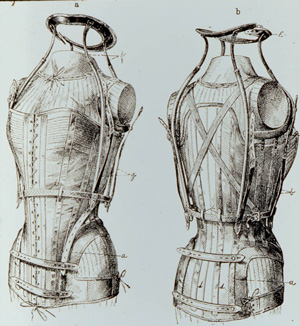
Boston Brace
The Boston brace or what is commonly called Thoraco-Lumbo-Sacral-Orthosis (TLSO) are typically prescribed to treat adolescent idiopathic scoliosis with the intent to stop the progression of the spinal curvature. Many older design TLSO braces are generic “off the shelf” designs NOT custom made for each patient. Even when these braces are individually designed, they are little more than modified “barrel” braces.
Today there are a variety of scoliosis braces in use but the Boston Brace is the most commonly prescribed. While the Boston brace claims to be custom designed and to be a stabilizing brace rather than a corrective brace, the Boston Brace is usually prescribed without any scoliosis exercises.
Chêneau Brace
Modern bracing begins with the work of Dr Jacques Chêneau of Toulouse, France. Chêneau constructed a de-rotation brace in polyethylene plastic that was introduced in 1979, as the Chêneau brace (Chêneau-Toulouse-Münster, CTM).
Rigo Chêneau Brace
During the past decade, Dr. Rigo of Barcelona has furthered the development of the original Chêneau brace, by combining his new classification of scoliosis, to design the Rigo Chêneau brace. His design was the first to effectively address rib deformity. The next evolution was the RSC Rigo System Chêneau. The brace is based on measurements of the patient and Dr. Rigo’s formula.
Providence Brace and Charleston Brace
The Providence and Charleston scoliosis braces are “part-time” braces designed to be worn only at night. This type of brace has a significant bend and can not be worn for any length of time while standing. The design is limited to use while the patient is in bed sleeping. The original concept relied on the growth of the child taking place mainly at night. By wearing the brace at night, it was believed the child would grow into a straighter spine. Unfortunately research has shown that this type of bracing is only effective on very small curves.
SpineCor Brace
Developed at Sainte-Justine Hospital by the Spine Corporation in 1992, the SpineCor brace is considered a “dynamic corrective brace”. Dynamic corrective braces use soft, elastic materials and claims to be able to do more than simply stabilize the progression of scoliosis. Independent research on SpineCor indicate that it is not effective on curves above 20-25 degrees or on stiff spines (Adults). My personal experience has been that SpineCor is only rarely effective with “S” curve patterns.
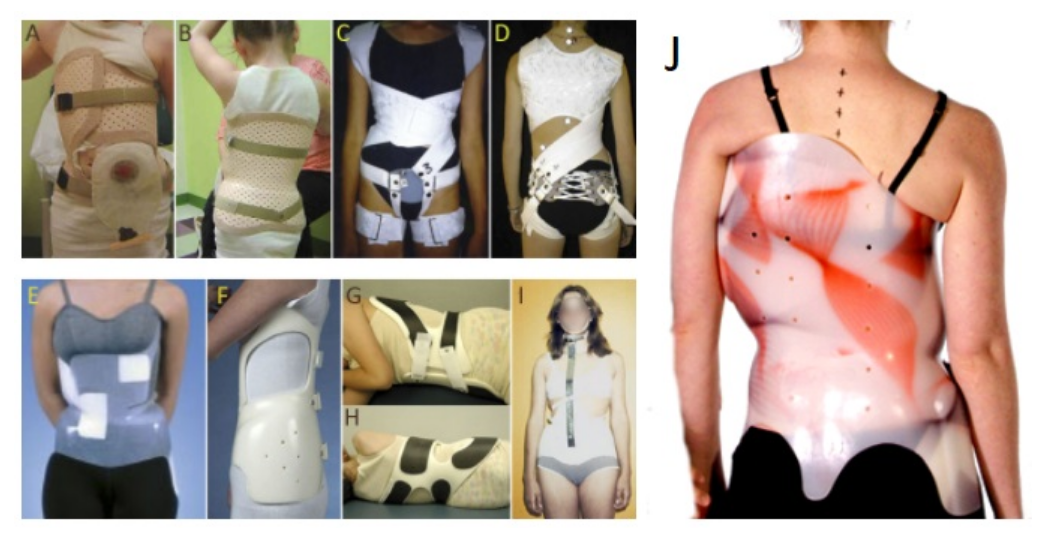
ScoliBrace – Modern Advanced Scoliosis Bracing
This latest evolution is scoliosis bracing was released in 2012 and utilizes a unique “super corrective” bracing design. Part of the evolution in bracing has to do with the measurement system used to create a custom made design. Primitive methods of measuring have used a tape measure or plaster casting. The latest method involves CAD/CAM technology. With the use of a 3D imaging software called BraceScan, LASER scans of the patient are imported into the design software, then a “virtual cast” is modified so that the brace design is customized to fit the patient’s unique measurements, curve pattern, degree of stiffness, etcetera.
The ScoliBrace has a super-corrective effect by positioning the body and spine in their over-corrected or mirror image position. The curve size is reduced in the majority of cases, as well as improvements to rib humping, shoulder level and the overall appearance of the body.
There are two groups of patients who can benefit from this type of scoliosis bracing:
- Young people who have not reached skeletal maturity. This type of scoliosis back bracing is meant to be used while the spine is still growing.
- Skeletally mature patients. After the spine reaches maturity a different bracing strategy is used.
For more information contact our office.
